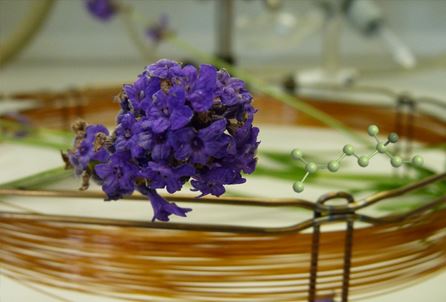Chromatography

Chromatography is used for separation of mixtures. A mixture dissolved in a “mobile phase” passes through a stationary phase, which separates the analyte.
Chromatography is used for separation of mixtures. A mixture dissolved in a “mobile phase” passes through a stationary phase, which separates the analyte. The ultimate goal of chromatography is to separate different components.
The stationary phase or adsorbent in column chromatography is a solid. The most common stationary phase for column chromatography is silica gel, followed by alumina.
Also possible are ion exchange chromatography, reversed-phase chromatography (RP), affinity chromatography or expanded bed adsorption (EBA). The mobile phase or eluent is either a pure solvent or a mixture of different solvents. It is chosen so that the retention factor.
The Van Deemter equation in chromatography relates the variance per unit length of a separation column to the linear mobile phase velocity by considering physical, kinetic, and thermodynamic properties of a separation.
•Column chromatography : the stationary bed is within a tube. The particles of the solid stationary phase or the support coated with a liquid stationary phase may fill the whole inside volume of the tube (packed column) or be concentrated on or along the inside tube wall leaving an open, unrestricted path for the mobile phase in the middle part of the tube (open tubular column). Differences in rates of movement through the medium are calculated to different retention times of the sample.
•Flash column chromatography : the solvent is driven through the column by applying positive pressure. This allowed most separations to be performed in less than 20 minutes, with improved separations
•Thin layer chromatography (TLC) is similar to paper chromatography. However, instead of using a stationary phase of paper, it involves a stationary phase of a thin layer of adsorbent like silica gel, alumina, or cellulose on a flat, inert substrate. Compared to paper, it has the advantage of faster runs, better separations, and the choice between different adsorbents.
•Ion exchange chromatography uses ion exchange mechanism to separate analytes. It uses a charged stationary phase to separate charged compounds including amino acids, peptides, and proteins. In conventional methods the stationary phase is an ion exchange resin that carries charged functional groups which interact with oppositely charged groups of the compound to be retained. Ion exchange chromatography is commonly used to purify proteins using FPLC (fast protein liquid chromatography).
•Chiral chromatography involves the separation of stereoisomers.
